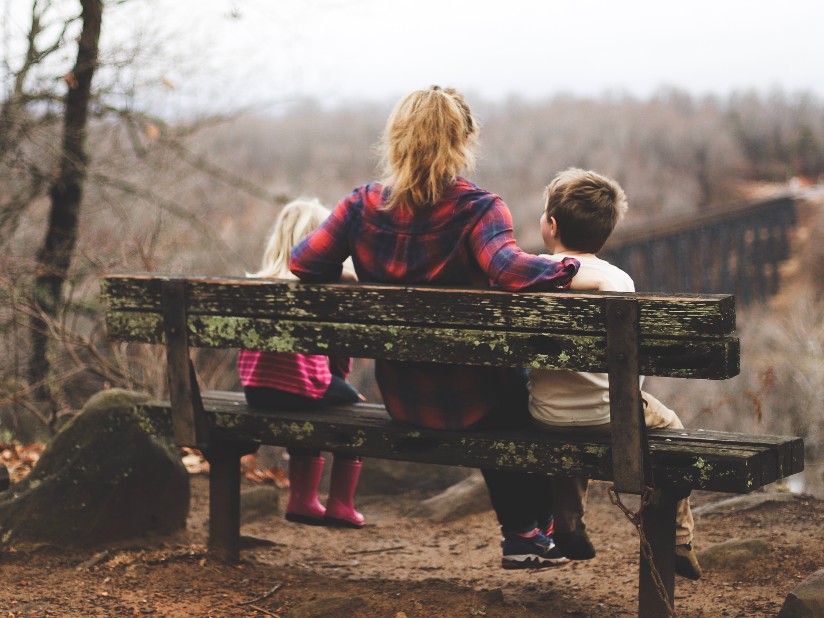Maybe it’s the end of your workday and you’re picking up your young child from preschool. As you buckle her into her car seat, she starts telling you about something that happened on the playground. The order of events is hard to follow; plus, your mind is already on what to make for dinner. The most you can do is reply to her with an occasional, absent-minded “uh-huh” as you drive home.
Or maybe you’re a preschool teacher with 11 very active children running in literal circles around the room. Meanwhile, a twelfth preschooler chooses that moment to tell you a complicated story about his dog. Or is it his toy dog? Some of the basic elements just aren’t clear. You smile and nod, then rush to herd the rest of the class over to their carpet squares for morning meeting while the preschooler continues to narrate, apparently to himself.
Do these scenarios sound familiar? When we adults are feeling frazzled, it can be next to impossible to tune in to the stories that young children tell. But did you know that when children share stories about their lives–called personal narratives–they are doing important learning? When we engage with those personal narratives, we’re helping them grow.

Children’s stories do more than simply inform us about how they spend their days. Telling stories promotes children’s language development, along with their executive functioning. Executive functioning refers to the set of skills that allow us to control our behavior rather than acting on impulse. Following multi-part directions or working toward a goal are examples of skills that require executive functioning. So is refraining from an impulsive action that could cause harm or get us into trouble, such hitting a friend or yelling in the classroom.
So, why does storytelling affect executive functioning? It turns out that language development and executive functioning are related. Chris Wing, PhD ’13, CCC-SLP, is a speech-language pathologist who has researched that connection. She has found that as we help children work on their communication skills, their executive functioning also improves. There is also evidence that learning to use the vocabulary of emotions and states of mind correlates with the ability to self-regulate. Self-regulation–recognizing our emotions and keeping them in check when we need to–is an important aspect of executive functioning.
“When I talk with kindergarten teachers,” Wing says, “They often tell me, ‘I don’t care if incoming kindergarteners know how to read or know their numbers. I want children to be able to attend, get along with their classmates, and relate to me as a new adult.’ What they are saying is they want children to have learned executive functioning and self-regulation skills.”
Wing believes that storytelling is a great way for young children to work on those skills. That’s why The Family Partnership commissioned Wing to create a preschool curriculum that includes storytelling. The Family Partnership is a Minnesota nonprofit that provides early childhood education along with mental health and other services. Want to make storytelling part of your everyday routine and help children get the most benefit from it? Here are pointers based on the curriculum that Wing developed:
- Model storytelling for them by telling a simple story about your day: “Guess what happened to me in line at the grocery store! It was really funny.”
- Tell a story with a child or children as a shared event. Start with a question: “Remember when we set up the bird feeder outside our classroom window? Who wants to share what happened next?” Then take turns adding details.
- Meet the child where they are. We often ask children lots of questions about events or aspects of their day that we adults are curious about. If these are not the topics that most interest them, though, children likely won’t be as eager to tell about them. Try letting children direct the conversation and share what’s most meaningful to them.
- It takes practice to provide the “who, what, where” context that a listener needs. If the child’s story is hard to follow or missing important details, ask questions to fill in the blanks: “Great story! Tell me, what happened first?” Ask about when and where the story occurred, who was there, and what the sequence of events was.
- The most important question in Wing’s storytelling curriculum is: “How did you feel?” Try to help children describe how they felt physically and emotionally at the time of the story. Prompt them with words like excited, silly, frustrated, tired, surprised, and hungry.
- It’s okay to have big feelings! Storytelling can be a way to work through our thoughts and feelings about negative events. Naming our feelings is an important part of self-regulation, and self-regulation is a major factor in resilience.
- Have fun with it! Be as silly or as dramatic as you want. Maybe you want to act out what happened. Maybe you want to tell the story in silly voices. Research shows that positive engagement facilitates learning.
Storytelling doesn’t need to happen at a particular time of day. You don’t need any special materials to do it. And there’s no cleanup required! Storytelling is a simple activity that goes straight to the heart of some of the most important things children need to learn, like language and self-regulation. The next time a preschooler in your life starts telling you the saga of finding a feather on the playground or getting into an argument with a friend, see if you can give them your full attention. (If you’re that preschool teacher with a wild roomful of four-year-olds, it’s okay to ask your little storyteller to hold that thought and connect with him later!) Experiment with some of Wing’s strategies. You might just get inspired to share a personal narrative of your own. What stories do you have to tell?





